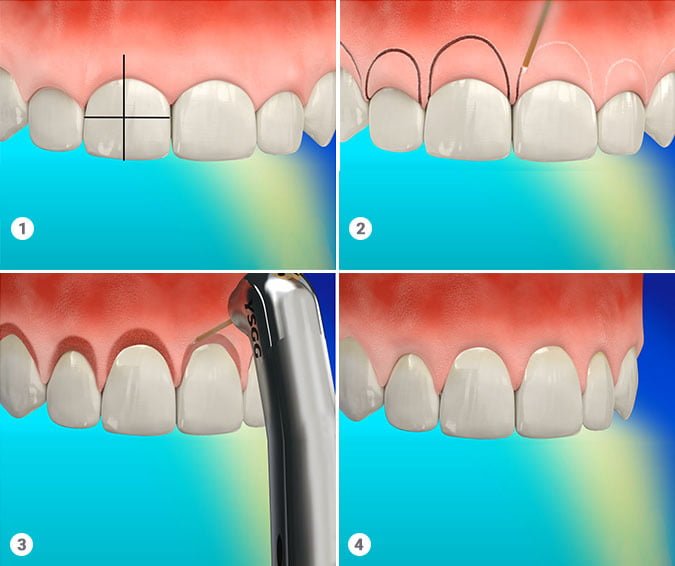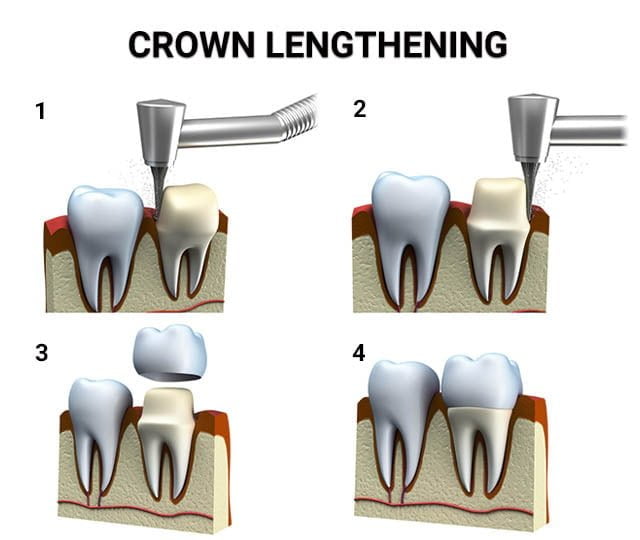

Crown lengthening, like its name implies, is a procedure that removes gum tissue, making your teeth seem longer. It’s rare when someone asks for crown lengthening surgery. Usually, it’s the first step of a multi-step dental restoration process. A family dentist, such as Dr. Alex Shalman, can perform this outpatient surgery in the Lower Manhattan office of his boutique practice. While you need some recovery time for your gums to heal, the procedure itself is quite painless. Call Dr. Shalman to find out if the procedure can benefit you.
Crown lengthening is an oral surgery done to expose more of your tooth or teeth. The surgery involves removing some of your gums, bone or both. Sometimes, your family dentist recommends this procedure for purely cosmetic reasons, because your teeth appear to be too small. Other times, though, the procedure may be necessary before you undergo a separate, second procedure.
Your dentist can perform crown lengthening surgery on one tooth or on several teeth during the same procedure. Your dentist may decide it’s necessary or wise to do it for all of your upper teeth or all of your lower teeth at the same time. When Dr. Alex Shalman is your dentist, he discusses with you the reasons for the procedure beforehand.

Our dentist often performs the crown lengthening surgery to access a problem tooth or to insert a dental device, such as a bridge or veneer.
The reasons for a crown lengthening procedure include:
When the procedure isn’t done for cosmetic reasons, it’s not often done as a standalone surgery. Crown lengthening is usually one step in a tooth restoration process. An alternate procedure, if you’re just looking for smile improvements, is gum contouring, which is less invasive than crown lengthening. An experienced family dentist like Dr. Shalman can safely do either outpatient procedure in his boutique dentistry practice.
Lovely staff. Dr. Shalman extracted my teeth twice. I can actually say that going to the dentist is fun because of Dr. Shalman and his staff. Love how the clinic is small and cozy
Eugenia. Xiao
Before your procedure, Dr. Shalman may take x-rays of the particular trouble spot — or of your whole mouth, if you’re having extensive crown lengthening. Depending on your oral health habits, you may need to undergo a teeth cleaning procedure before your crown lengthening.
When you’re ready, our dentist uses one of three different approaches to the procedure:
Each of these requires you to have a numbing local anesthesia, which minimizes your pain during the procedure. While all three surgeries produce some level of crown lengthening pain, the gingivectomy generates the lowest level of pain, and none of the pain exceeds tolerable levels. You can usually control the pain with short-term use of over-the-counter painkillers.
Depending on which procedure you had done, your post-surgery care varies. Prepare your home with acetaminophen or ibuprofen, super soft foods and some mouthwash to keep your mouth as germ-free as possible. If you have stitches, your dentist provides specific care instructions, especially regarding your daily tooth-brushing, flossing and mouth-washing.
After you recover, Dr. Shalman may begin to prepare you for your next dental procedure. Follow all post-surgery directions carefully to ensure your next procedure goes off without a hitch. Complete recovery, depending on where in your mouth the procedure was done, may take anywhere from a couple of weeks to a couple of months.
To be evaluated for crown lengthening surgery or to find out if you need crown lengthening, contact Dr. Alex Shalman for an appointment today. His boutique practice serves the West Village, East Village and Chelsea neighborhoods — in fact, all of Lower Manhattan — as a family and cosmetic dentist.
Shalman Dentistry
44 W 10th St #1A
New York, NY 10011
(10th St, between 5th & 6th Avenue)
☎ (212) 658-1093
Get Directions (Map)